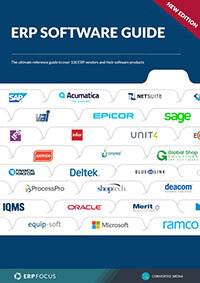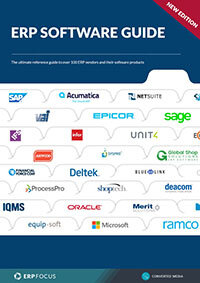4 Ways the ERP Project has Changed: For Better or Worse
Today’s ERP systems are fast and relatively easy to use. They are big, comprehensive and inclusive of the whole enterprise. And yet, they continue to get better! What impact has this constant evolution had on our ERP projects?
Implementation Timeframes
You can choose an ERP that takes years to implement. For large, international businesses this might be the best option as there are many disparate requirements from users around the globe.
Another business might select a system where the ERP project can be completed in only days. And if you want to start getting returns very quickly from your ERP, this might be the best way for your organization.
Customization & Configuration
We have generic ERPs that can be easily customized to meet the needs of almost any organization. These can be found across the spectrum of ERP from very large and comprehensive systems for one company and relatively simple, lower cost systems for another. We have highly focused ERPs designed to meet the needs of only a particular market segment of ERP users. If your business is very unique or you think it is, this might be your choice.
Cloud Access
Some of us use an ERP located in the cloud. We connect through the internet. All our data is stored remotely and we might not even know where that storage place is - this can create barriers to a successful ERP project. The software is also remote and exactly the same software is used by every customer, regardless of the business or organization.
Hardware Changes
The technology keeps getting better too. Floppy discs and DVDs are long gone and now the hard disc is being replaced by solid state “discs” that provide nearly instantaneous access and almost unlimited storage. Fiber optic wiring is replacing copper wires to allow faster connections with fewer problems.
Back in the day when ASK MANMAN and MAPICS were some of the big names in ERP systems things were different. These ran on central computers and users connected through terminals that had little or no processing power. The screens were black with white or green text characters in lines with no graphics. Many fields were limited to 80 characters, a remnant of Hollerith computer cards. Often users would do most of their work in pencil on paper and only use the computer for actual data entry. Calculating the changes in material requirements would require hours and usually was only done weekly or even less frequently.
For us users, the times keep getting better. One might think after decades of use ERP systems might become a commodity, cheap and generic for all of us. Instead, we have many businesses with a great variety of choices to offer. Today’s problem might be too much choice during your ERP project. How can we have it any better?
Free white paper

ERP Software Guide
A 70 page guide covering over 100 different software products

Featured white papers
-

ERP Implementation: 9 steps to success
The 9 proven steps you should follow when implementing ERP
Download -

ERP Implementation Checklist
Over 120 actionable steps to implementing a new ERP successfully
Download -

Manufacturing ERP Implementation Checklist
Over 70 actionable steps to rolling out new manufacturing ERP software
Download
Related articles
-

The case for multi-tier ERP implementations
Learn more about multi-tier ERP implementation and why you might need one
-

Secret KPI: Why Your ERP Implementation Team Matters More Than Software
Learn how Godlan ensures successful ERP implementation for manufacturers with proven strategies &...
-

An example ERP implementation team structure for your project
Learn about three key elements of an ERP implementation team and the individuals who contribute w...

